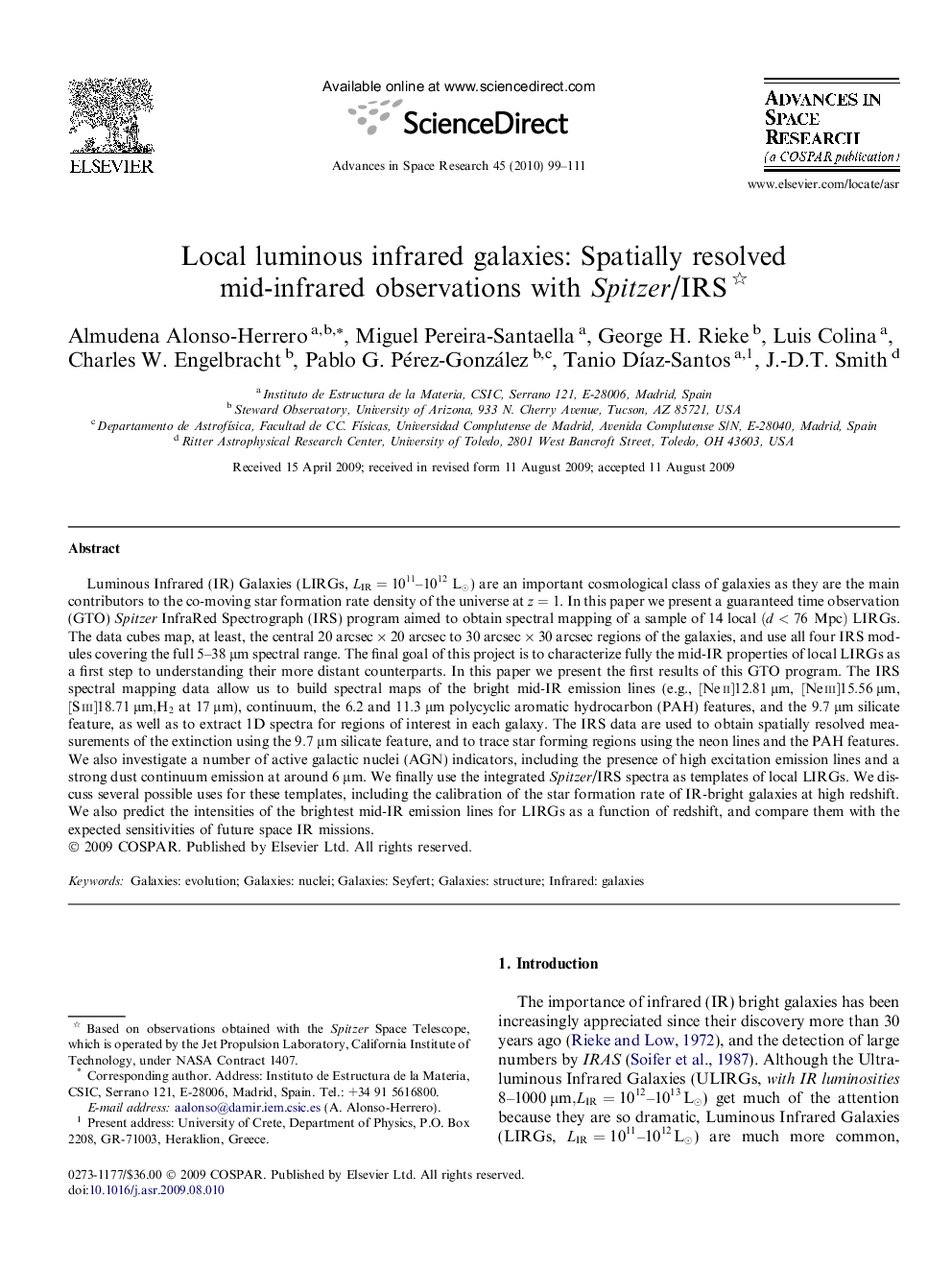| Article ID | Journal | Published Year | Pages | File Type |
|---|---|---|---|---|
| 1767788 | Advances in Space Research | 2010 | 13 Pages |
Abstract
Luminous Infrared (IR) Galaxies (LIRGs, LIR=1011-1012Lâ) are an important cosmological class of galaxies as they are the main contributors to the co-moving star formation rate density of the universe at z=1. In this paper we present a guaranteed time observation (GTO) Spitzer InfraRed Spectrograph (IRS) program aimed to obtain spectral mapping of a sample of 14 local (d<76Mpc) LIRGs. The data cubes map, at least, the central 20arcsecÃ20arcsec to 30arcsecÃ30arcsec regions of the galaxies, and use all four IRS modules covering the full 5-38μm spectral range. The final goal of this project is to characterize fully the mid-IR properties of local LIRGs as a first step to understanding their more distant counterparts. In this paper we present the first results of this GTO program. The IRS spectral mapping data allow us to build spectral maps of the bright mid-IR emission lines (e.g., [Ne ii]12.81μm, [Ne iii]15.56μm, [S iii]18.71μm,H2 at 17μm), continuum, the 6.2 and 11.3μm polycyclic aromatic hydrocarbon (PAH) features, and the 9.7μm silicate feature, as well as to extract 1D spectra for regions of interest in each galaxy. The IRS data are used to obtain spatially resolved measurements of the extinction using the 9.7μm silicate feature, and to trace star forming regions using the neon lines and the PAH features. We also investigate a number of active galactic nuclei (AGN) indicators, including the presence of high excitation emission lines and a strong dust continuum emission at around 6μm. We finally use the integrated Spitzer/IRS spectra as templates of local LIRGs. We discuss several possible uses for these templates, including the calibration of the star formation rate of IR-bright galaxies at high redshift. We also predict the intensities of the brightest mid-IR emission lines for LIRGs as a function of redshift, and compare them with the expected sensitivities of future space IR missions.
Related Topics
Physical Sciences and Engineering
Earth and Planetary Sciences
Space and Planetary Science
Authors
Almudena Alonso-Herrero, Miguel Pereira-Santaella, George H. Rieke, Luis Colina, Charles W. Engelbracht, Pablo G. Pérez-González, Tanio DÃaz-Santos, J.-D.T. Smith,
